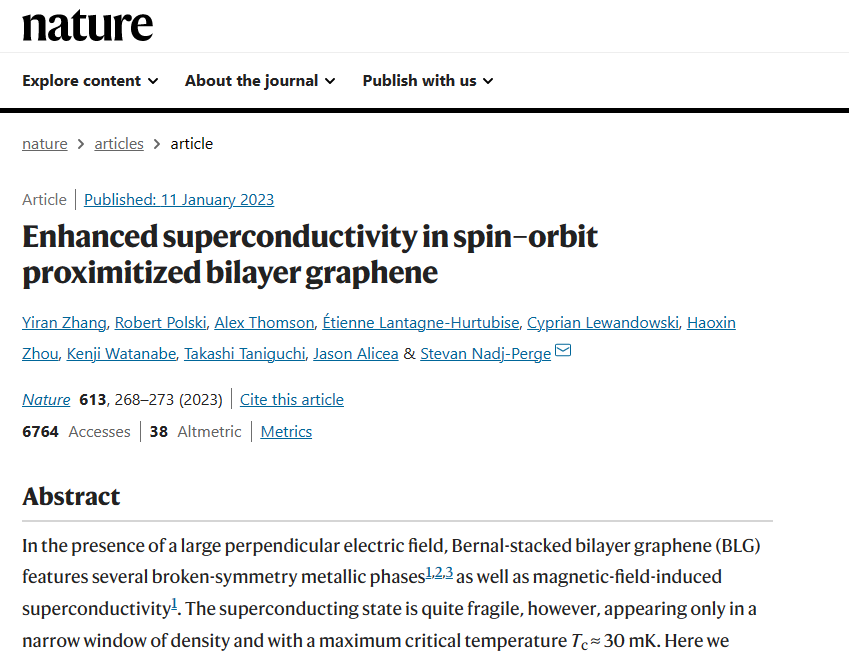Yiran Zhang, a Physics graduate of Zhiyuan Honors Program, is pursing PhD studies at Caltech. Recently, he had published a paper entitled “Enhanced superconductivity in spin–orbit proximitized bilayer graphene” in Nature. Last September, Yiran had published paper on graphene devices and spin-valley symmetry breaking and superconductivity in Science. (Related story: https://zhiyuan.sjtu.edu.cn/html/zhiyuan/news_view.php?id=3896).
Link:https://www.nature.com/articles/s41586-022-05446-x

"For the first time in a graphene superconducting system, we have achieved a significant increase in the superconducting transition temperature, laying a solid foundation for the production of more stable and highly adjustable graphene superconducting devices," said Zhang Yiran. In this study, tungsten disselenide (WSe2) was placed on the simplest and most stable Bernal stacked graphene bilayer and spin-orbit coupling was introduced into the bilayer graphene through the near neighbor effect. He found that BLG-WSe2 hetero structure can significantly promote superconductivity. Not only can the superconducting transition temperature Tc be improved by an order of magnitude, but the superconductivity no longer depends on the in-plane magnetic field. In addition, the superconductivity occupies a large phase space in the phase diagram. At the same time, they have also found that the phase diagram of BLG-WSe2 and superconductivity showed strong asymmetry with respect to the electric displacement field. This suggests that the Ising spin orbit coupling obtained from the tungsten diselenide neighbor plays a crucial role in the superconducting Cooper pairing.

Yiran sees the research as another substantial advance in the field of graphene superconductivity experiments. As for the original intention of this project, Yiran said that an important discovery for condensed matter physics in recent years is the strong correlation phenomenon and superconductivity phenomenon in graphene. From the discovery of Mohr's graphene in 2018 to the discovery of intrinsic graphene superconductivity in 2021, these rich and bizarre physical phenomena have attracted wide attention in the academic world.
(Source: DeepTech)
